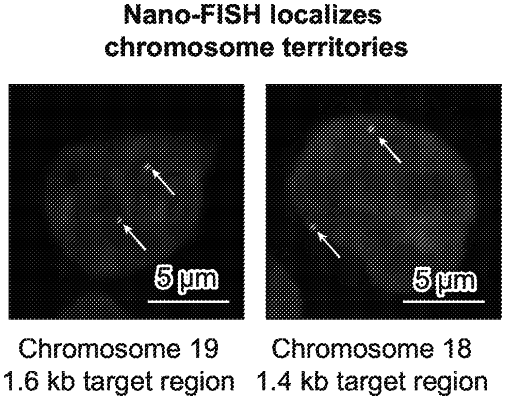| CPC C12Q 1/6841 (2013.01) [A61K 39/461 (2023.05); A61K 39/4611 (2023.05); A61K 39/4631 (2023.05); A61K 39/464412 (2023.05); A61K 39/464413 (2023.05); A61K 39/464417 (2023.05); A61K 39/464453 (2023.05); A61K 39/464462 (2023.05); A61K 39/464466 (2023.05); A61K 39/46447 (2023.05); C12Q 1/6876 (2013.01); A61K 2239/48 (2023.05); A61K 2239/49 (2023.05); A61K 2239/55 (2023.05); A61K 2239/59 (2023.05)] | 13 Claims |

|
1. A method for detecting presence or absence of a viral vector backbone nucleic acid sequence integrated into genomic DNA of human cells, wherein the viral vector backbone nucleic acid sequence is no more than 3 kilobases (kb) in length, the method comprising:
a) contacting fixed and permeabilized human cells with a plurality of probes under hybridization conditions, wherein each probe of the plurality of probes:
(i) has a length of 30 to 50 nucleotides;
(ii) binds to the viral vector backbone nucleic acid sequence and is at least 95% complementary to the viral vector backbone nucleic acid sequence; and
(iii) comprises a single fluorophore directly conjugated to the first nucleotide at the 3′ end of the probes, wherein the same fluorophore is directly conjugated to each probe, and wherein the probes are not conjugated to a quencher,
wherein the plurality of probes are at least 30 probes and no more than 70 probes;
b) detecting a presence of the fluorophore in the cells, wherein the presence of the fluorophore indicates the presence of the viral vector backbone nucleic acid sequence.
|